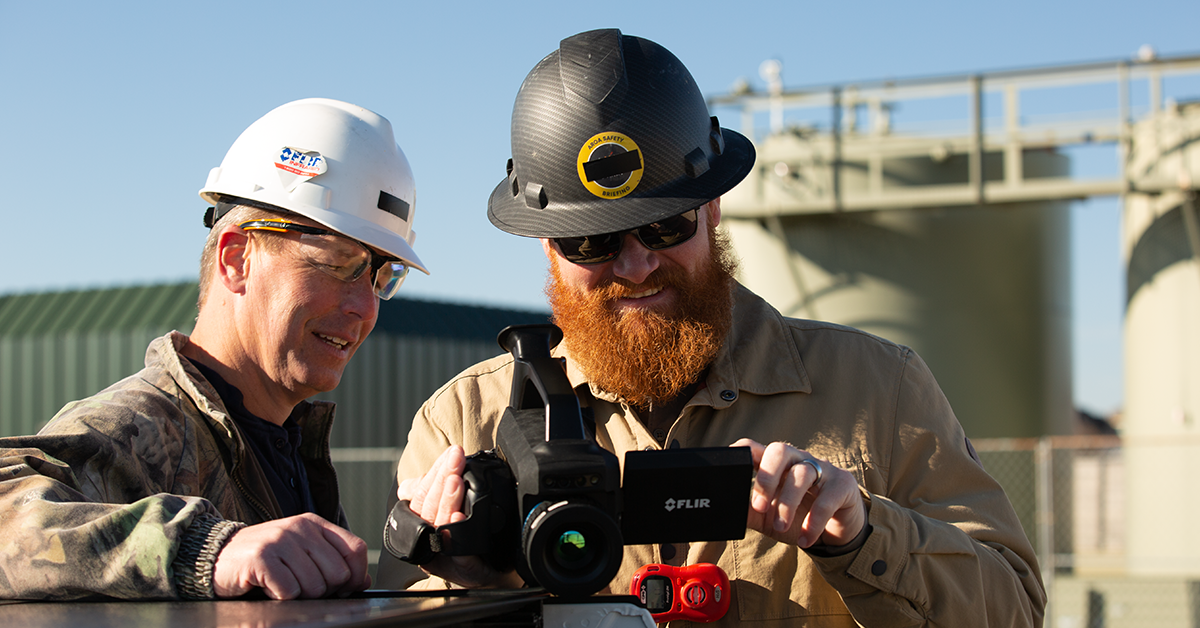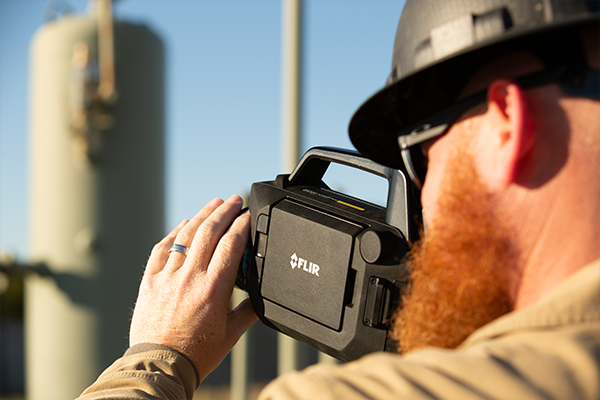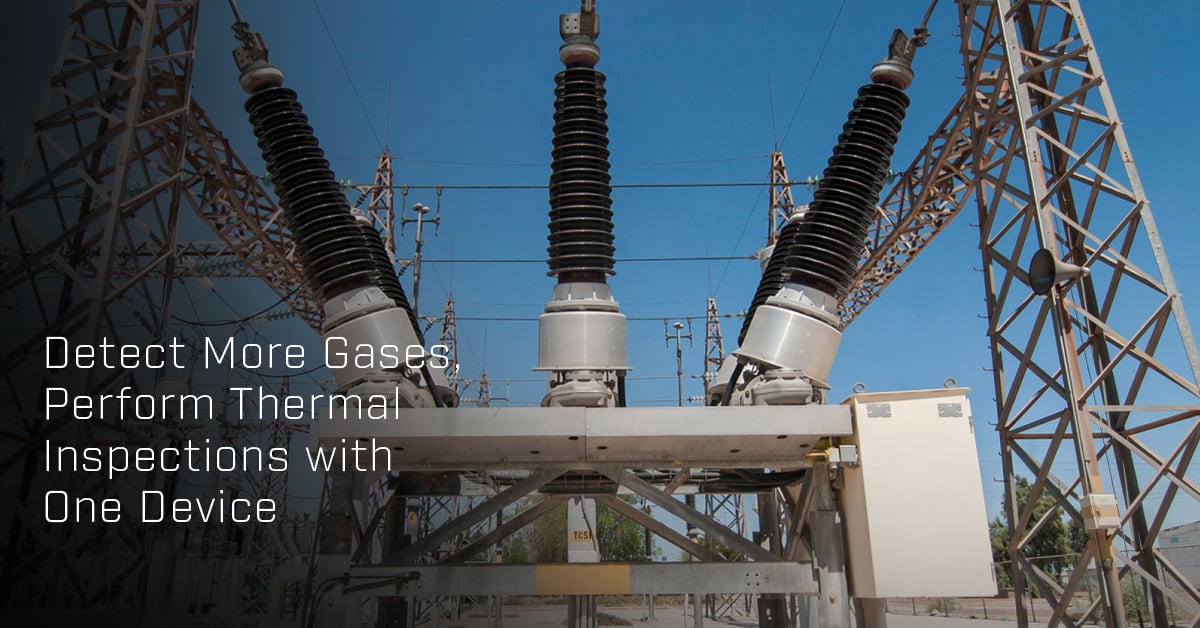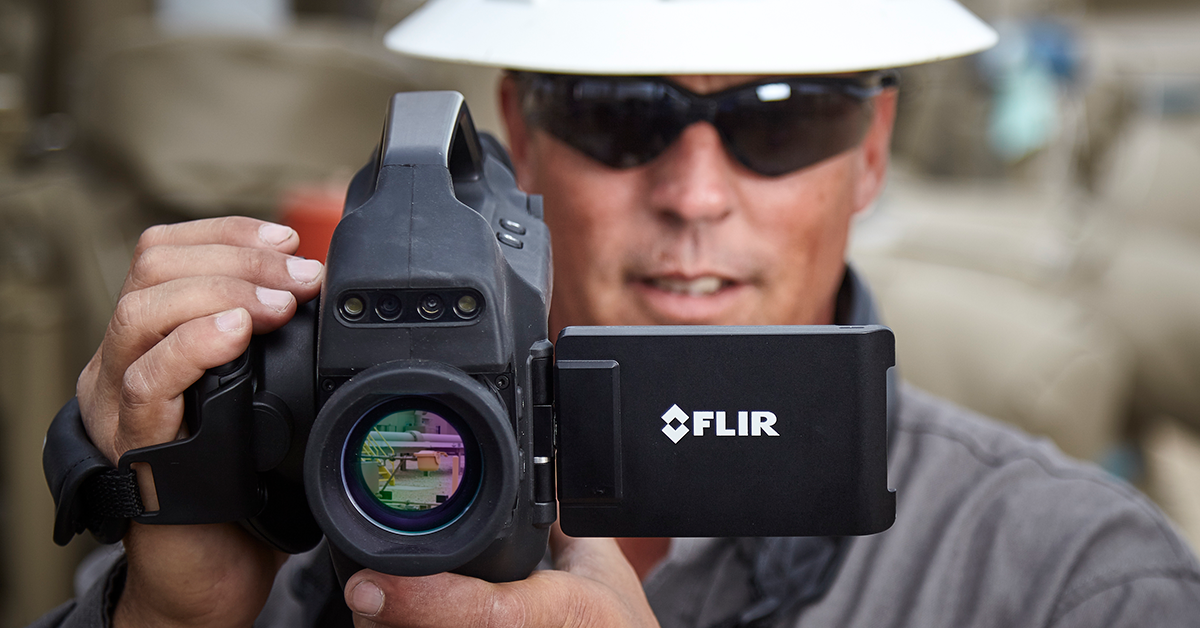Teledyne FLIR announces new G-Series Optical Gas Imaging Cameras

Together, we've raised the bar. Again.
FLIR has been the leader in Optical Gas Imaging for years. And now, with the launch of the FLIR G-Series Optical Gas Imaging cameras, it has set a new standard in OGI, thanks to you.
The FLIR team spent years talking to customers, taking notes, and listening to feedback from operators and end users to learn how its OGI cameras could be improved and what needed to be done to ensure it was creating the most efficient camera for the Optical Gas Imaging customer.
With that feedback, FLIR developed a camera that has improved software integration for recording and reporting findings, better ergonomics that allow the user to more comfortably interact with the camera, and superior gas visualization and detection including the first ever in-camera gas quantification for the Gx320, G620, and Gx620 cameras.
All your suggestions. FLIR just put it into action.

Questions and Answers
Is the touchscreen ReCeptive to a Gloved Hand?
No, it's capacitive touch. All buttons can be reached with joystick just like on the GF77 and FLIR premium handheld cameras.
Are previous battery models compatible with this new model, And Vice Versa? What is the battery life and charge time? how many come with a camera purchase?
No, the FLIR G-Series features new batteries and are not they are not cross compatible with the legacy FLIR OGI cameras. The run time is 2.5 hours with a charge time of 2 hours. Two batteries are supplied with the camera and additional are available for purchase.
Has the optical (visual) camera been upgraded in the G-Series?
The visual camera has been upgraded to a 5MP camera, which saves images in the resolution 1280 × 960.
Can the Gx320 be used for thermal imaging specifically for oil and gas applications like corrosion under insulation, sand level determination etc…?
Yes. The Gx320 has radiometric capabilities and image capturing capabilities.
What type of Hazardous location certification will apply to these "x" versions? Will certificates be available?
The Gx320 and Gx620 cameras will be ATEX, IECEx, and HAZLOC certified for use in hazardous locations. These certifications will be downloadable on FLIR's support website (support.flir.com) as soon as they are available.
It seems like the resolution of the videos that I transfer over to the pc is poor. Have there been improvements made in the transferred resolution?
We have addressed this issue on the G-series by adding more lossless compression to .mpeg recording.
Can you discuss the differences between the NECL and MLLR between the Gx320 and Gx620 affect overall leak detection (pros/cons)?
With OGI cameras (and IR cameras in general), a lower resolution camera of the same type will have better thermal (and gas) sensitivity. This means that a 320 × 240 camera will be able to see the smallest of leaks better but the difference is minimal and both cameras meet U.S. EPA sensitivity requirements (OOOOa & Appendix K). If your application is close range with the desire to see the smallest of leaks, the Gx320 camera will be the best on the market. If your general application is to view components from a greater distance and the smallest leaks are not as important, a Gx620 camera is recommended.
What lens options are available? And are these compatible with legacy FLIR OGI cameras?
We will have 25°, 14.5° and 6° FOV lenses with the G Series. These are not compatible with legacy FLIR OGI cameras.
Do the models Gx320, G620, Gx620, similar to the model GF77, have the function of voice recording?
Yes, but the camera does not have a built-in microphone due to cooler making noise. Voice recording is available through Bluetooth® headset connected to the camera.
What about replacement for GF309?
The GF309 camera has not changed and there is no update to the furnace inspection cameras at this time.
Is it possible make a sketch on the video?
No, sketch is only possible on images and not videos.
Looking to the transport case, is there a space for the neck strap when attached to the camera?
There is space under the camera to fit the neck strap when attached to camera.
Is there room for additional lenses in the camera case?
There is an extra slot to fit additional lenses in the re-engineered camera case.
What is the maximum distance for measurement, and is it increased with the ability to use a long range lens?
Like all OGI cameras, the distance in which the camera can be used is dependent on the size of the leak being imaged. If using the FOV6 lens, you can image a leak at four times further than with a standard lens.
Can the circle for 1-Touch Level/Span be changed to a larger size?
No, it’s a standard size.
What all units of quantification will the camera have?
The camera will have the same standard units of quantification as the FLIR QL320, which are standard in the industry. These will include a variety of mass and volume flow measurements as well as concentration-pathlength.
How does Quantification in camera work? Do we still need a QL320?
Quantification in Camera is unique and will work similar to the existing FLIR Q-Mode feature except that after the recording, you will immediately get a quantification reading (instead of the requirement to remove the SD card, put it in the QL320, process the file, etc. like with the current Q-Mode feature). A QL320 is not required for quantification but could be beneficial for some advanced users and additional features (like masking or sensitivity adjustment).
Can you /quantify when operating in HSM mode?
No. You can only quantify in IR mode as radiometric info in image is needed. You can use the camera in either auto or manual IR mode, which will allow other advanced features like 1-Touch Level/Span.
How many gases can be quantified in the camera? Will it allow a multiple component stream to be quantified?
Quantification in Camera uses the same list of common gases (seven in total) as the QL320 as the predominant gas in the mixture. If there are multiple gases in the mixture, FLIR has a spreadsheet to assist in exact quantification readings. Using the predominant gas is recommended in all cases.
What is the accuracy of the Quantification feature in the camera?
FLIR does not have a published quantification accuracy specification for our QL320 or quantification in camera due to the challenges in quantifying a turbulent gas leak with natural fluctuations in movement that continually changes. Instead, we prefer to point users to 3rd party evaluations of our solution like CONCAWE and the AMFC. In these studies, it was determined that on a single reading basis, there was error with the FLIR QOGI solution but when used in aggregate reading situations (averaging multiple readings), the technology was very reliable with error percentages of 6% and 18%, respectively.
Do you have video links showing the quantification/measurement of emissions?
Not yet. We hope to have full training videos soon on many features of the G-Series cameras, including Quantification in Camera.
Can you provide an update on EPA approval of quantification under Subpart W and as a quantification replacement to Method 21?
To our knowledge, there is not an update regarding the U.S. EPA's acceptance of QOGI as an acceptable quantification technology. To the EPA, if an OGI camera finds a leak, it is required to be fixed and quantification is not necessary.
Is the camera EPA approved?
Yes. The G-Series cameras will meet EPA OOOOa and Appendix K gas sensitivity requirements the same as the GF Series. The detector in the cameras has not changed so the camera's capabilities related to gas detection have not changed.
Can we send in our cameras to install FLIR Ignite™ on our existing FLIR GF Series cameras?
No. Ignite™ is only available on the GF77 and G-series.
What is included with the G-Series regarding FLIR Ignite™? Is FLIR Ignite™ subscription based?
Users will get 1 GB of free storage for FLIR Ignite™ but additional storage in a subscription based model is available.
What type of Wi-Fi connection does the camera have? Is it Wi-Fi-direct or via internet connection? Can it connect at 10m?
The camera has Wi-Fi and can connect directly to a device by using the camera as a "hotspot" or connecting the camera to another device that is set up as a "hotspot". While directly connected, you can stream an image or have remote control of the camera via the connected device. You can also use internet Wi-Fi with FLIR Ignite™ to upload images or videos. If a connection is good, 10m is likely an acceptable distance to directly connect to a device.


